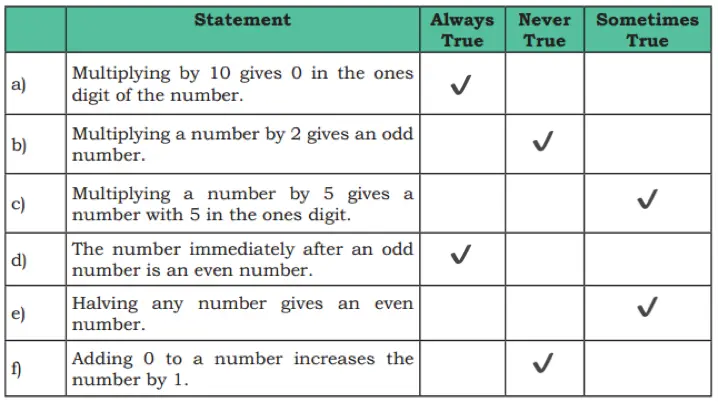Class 4 Maths Mela Chapter 9 Equal Groups NCERT Solutions
Based on the new textbook, Maths Mela, this post covers Chapter 9, Equal Groups for Class 4 students. These solutions help the students solve the whole chapter with ease.
Class 4 Maths Mela Chapter 9 Equal Groups Questions Answers – PDF Download
Animal Jumps (Page 128 – 130)
Fill in the blank spaces with the appropriate numbers. Find how many jumps the animal needs to take to reach its food.
1. The frog jumps 3 steps at time. Which numbers will the frog touch? Will it touch 67?
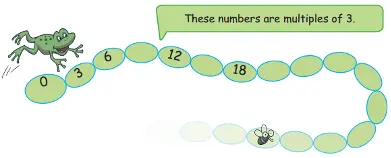
Solution:

The frog will touch the numbers 0, 3, 6, 9, 12….. that are multiples of 3. No, the frog will not touch the number 67 because 67 is not a multiple of 3.
2. The squirrel jumps 4 steps at a time. Which numbers will the squirrel touch? How many times should the squirrel jump to reach 60?
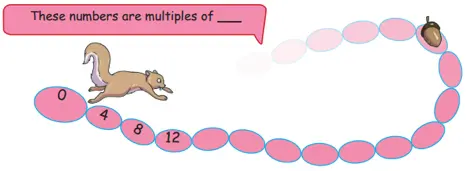
Solution:
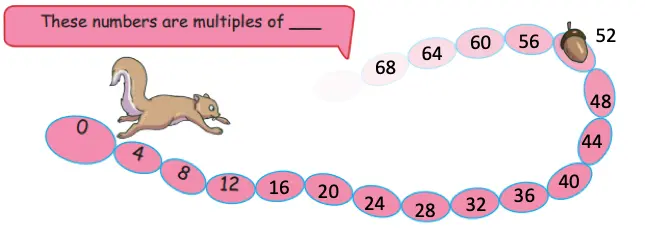
The squirrel will touch the numbers 0, 4, 8, 12, 16, 20…. that are multiples of 4.
Since 4 × 15 = 60.
Therefore, the squirrel should jump 15 times to reach 60.
3. The rabbit jumps 6 steps at a time. Which numbers will the rabbit touch? What is the smallest 3-digit number on which the rabbit will land? How many times did the rabbit jump to reach this number?

Solution:

The rabbit will touch the numbers 0, 6, 12, 18, 24… that are multiples of 6.
102 is the smallest 3-digit number on which the rabbit will land.
Since 6 × 17 = 102.
Therefore, the rabbit jumped 17 times to reach the number 102.
4. The kangaroo jumps 8 steps at a time. Which numbers will the kangaroo touch?

Are there numbers that both the rabbit and the kangaroo will touch?
Solution:
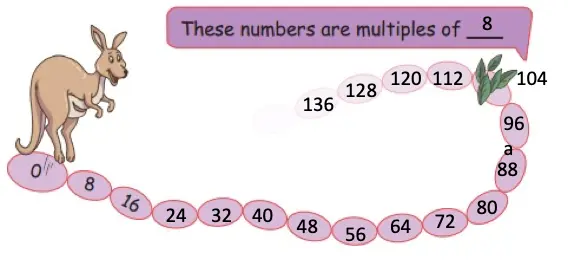
The kangaroo will touch the numbers 0, 8, 16, 24, 32, ….. that are multiples of 8.
The rabbit will touch the numbers that are multiples of 6.
So, the numbers that are common multiples of 6 and 8 are the numbers that both the rabbit and the kangaroo will touch i.e 24, 48, 72…
5. To reach 48, how many times did the rabbit jump? _______

How many times did the Kangaroo jump to reach the same number? _______
What did you observe? Share your thoughts.
Solution:
The rabbit jumped 8 times to reach 48 because 6 × 8 = 48.
The kangaroo jumped 6 times to reach the number 48 because 8 × 6 = 48.
We observed that the rabbit took shorter and a greater number of jumps than the kangaroo to reach the same number.
6. To reach 60, how many times did the frog jump? _______
How many times did the rabbit jump to reach the same number? __________
What do you observe? Share your thoughts.
Solution:
The frog jumped 20 times to reach the number 60.
The rabbit jumped 10 times to reach the number 60.
We observed that the frog took shorter and a greater number of jumps than the rabbit to reach the same number.
Common Multiples
1. Which numbers do both the frog and the squirrel touch? A few common multiples of 3 and 4 are ______________.
Solution:
The frog touches multiples of 3 while the squirrel touches multiples of 4.
Multiples of 3: 3, 6, 9, 12, 15, 18, 21, 24, 27, 30, 33, 36, 39, 42, 45, 48,…
Multiples of 4: 4, 8, 12, 16, 20, 24, 28, 32, 36, 40, 44, 48, 52, 56, 60,…..
Some common multiples of 3 and 4 are 12, 24, 36, 48,….
2. Which numbers do both the rabbit and the kangaroo touch?
A few common multiples of 6 and 8 are ____________________.
Solution:
The rabbit touches multiples of 6 while the kangaroo touches multiples of 8.
Multiples of 6: 6, 12, 18, 24, 30, 36, 42, 48, 54, 60, 66, 72, 78, 84, 90, 96, 102, 108, 120,….
Multiples of 8: 8, 16, 24, 32, 40, 48, 56, 64, 72, 80, 88, 96, 104, 112, 120, 128, 136, 144,…..
Some common multiples of 6 and 8 are 24, 48, 72, 96, 120,…
7. If the cat and the rat land on the same number, the cat will catch the rat.
The cat is now on 6 and the rat on 12. When the cat jumps 3 steps forward, the rat jumps 2 steps forward. Will the cat catch the rat? If yes, at which number?
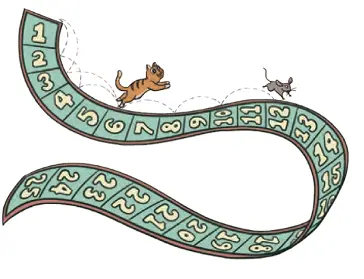
Solution:
The cat will land on the numbers 3, 6, 9, 12, 15, 18, 21, 24, 27, 30,….
The rat will land on the numbers 2, 4, 6, 8, 10, 12, 14, 16, 18, 20, 22, 24, 26, 28…..
Yes, the cat will catch the rat at number 18.
8. Find multiplication and division sentences below. Shade the sentences. How many can you find? Two examples are done for you.
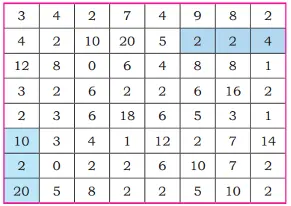
Solution:
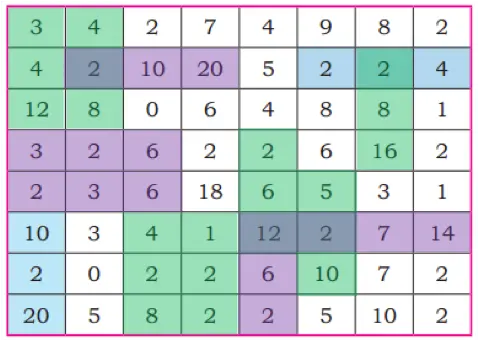
We found 15 such sentences.
Gulaboo’s Garden (Page 130 – 133)
1. Gulabo’s garden has lily flowers. Each lily flower has 3 petals. How many petals are there in 12 flowers? Show how you found your answer.
Gulabo will have 12 × 3 petals.
Petals in 10 lilies 10 × 3 petals = 30 petals
Petals in 2 lilies __________________
Petals in 12 lilies _________________
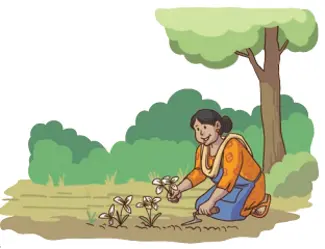
Solution:
Petals in 1 lily = 3
Petals in 2 lilies = 2 × 3 = 6 petals.
Petals in 12 lilies = 12 × 3 = 36 petals.
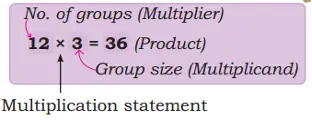
2. In a hibiscus flower there are 5 petals. Gulabo counted all the petals and found them to be 80. How many flowers did she have?
Gulabo has 80 ÷ 5 flowers.
10 petals are 2 flowers.
50 petals are 10 flowers.
Then, 80 petals are _______ flowers.

Solution:
80 petals are 80 ÷ 5 = 16 flowers.
3. Gulabo plants some marigold saplings in a box as shown in the picture.
There are ______ saplings in each row. There are ______ rows.
How many saplings has she planted?
How did you calculate it?
Mathematical Statement _________________
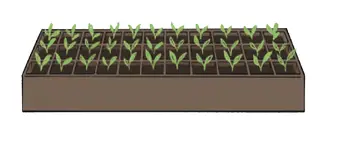
Solution:
There are 11 saplings in a row. There are 3 rows.
No. of sapling Gulbao planted = 3 × 11 = 33 saplings.
We calculated it by multiplying the no. of rows and the no. of saplings in a row.
Mathematical Statement: 3 × 11 = 33.
4. “Dailyfresh” supermarket has kept boxes of strawberries in a big tray.
How many boxes of strawberries does the supermarket have? Show how you found them.
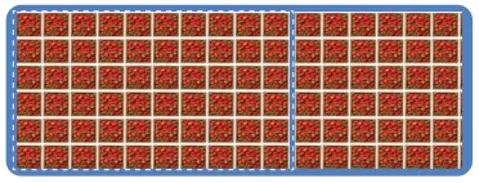
There are columns of strawberry boxes. There are boxes in each column.
There are boxes in all.
Mathematical Statement ______
Solution:
There are 16 columns of strawberry boxes.
There are 6 boxes in each column.
There are 96 boxes in all.
Mathematical Statement: 16 × 6 = 96.
5. Radha runs a bakery shop. She bakes 18 cupcakes in one tray of the size shown below.
a) Complete arranging the cupcakes in the two trays given below.

Solution:

b) She can use two such trays in her oven at a time. How many cupcakes can she make in one attempt? _______
Solution:
No. of cupcakes that can be baked in a tray = 3 × 6 = 18.
No of trays = 2
No. of cupcakes made in one attempt = 2 × 18 = 36.
c) Today she has received a special order. She has made 108 cupcakes. How many trays has she baked?
Solution:
No. of cupcakes made = 108
No. of cupcakes that can be baked in one tray = 18
No. of trays used = 108 ÷ 18 = 6 trays.
d) She has another square baking tray. She can bake 36 mini cupcakes in such a tray. Complete the arrangement below.
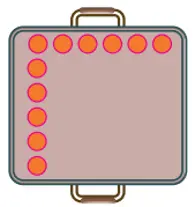
Number of columns: _______
Number of cupcakes in each column: _______
Multiplication statement _______
Find different ways of arranging the following numbers of cupcakes in rows and columns in your notebook. 36, 8, 12, and 24
Solution:
Number of columns: 6
Number of cupcakes in each column: 6
Multiplication Statement: 6 × 6 = 36
(i) 36 cupcakes can be arranged in a tray in 4 rows with 9 cupcakes in each row.
(ii) 8 cupcakes can be arranged in a tray in 4 columns with 2 cupcakes in each column.
(iii) 12 cupcakes can be arranged in a tray in 3 rows with 4 cupcakes in each row.
(iv) 24 cupcakes can be arranged in a tray in 6 columns with 4 cupcakes in each column.
The Doubling Magic (Page 133 – 134)
Magician Anvi came one day,
To Gulabo’s house, ready to play.
From her coat, with a grand display,
She pulled out 23 flowers, bright and gay!

She smiled and said, “Now watch and see,
How many flowers will there be?”

How many flowers are there now? ______________
Solution:
2 × 23 = 46 flowers.
Q. What magic did Anvi do?

a) Double of 32 =_____ b) Double of 14 =_____ c) Double of 26 =_____
d) Double of 17 =_____ e) Double of 39 =_____ f) Double of 45 =_____
Solution:
Anvi doubled the number of flowers with magic.

(a) Double of 32 = 64
(b) Double of 14 = 28
(c) Double of 26 = 52
(d) Double of 17 = 34
(e) Double of 39 = 78
(f) Double of 45 = 90
1. Guess what will be the ones digit of the following numbers when doubled.
Write the ones digit in the space provided,
a) 28 ______ b) 56 ______ c) 45 ______ d) 17 ______
Solution:
(a) 6
(b) 2
(c) 0
(d) 4
2. Give examples of numbers that when doubled give the following digits in the ones place,
a) 0 _______
b) 2 _______
c) 4 _______
d) 6 _______
e) 8 _______
What do we notice about the numbers that we get after doubling? Even or Odd?
Solution:
a) 45
b) 21
c) 12
d) 43
e) 34
We get even numbers on doubling even as well as odd numbers.
Q. Can we get 3, 5, 7, 9 as the ones digit after doubling?
Solution:
No, we can’t get 3, 5, 7, 9 as the ones digit after doubling any number.
Textbook Page 135 – 136
Q. Fill each square in the chart by multiplying the row number by the column number.
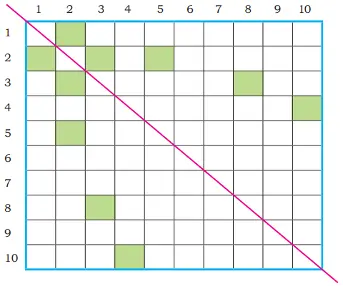
Solution:
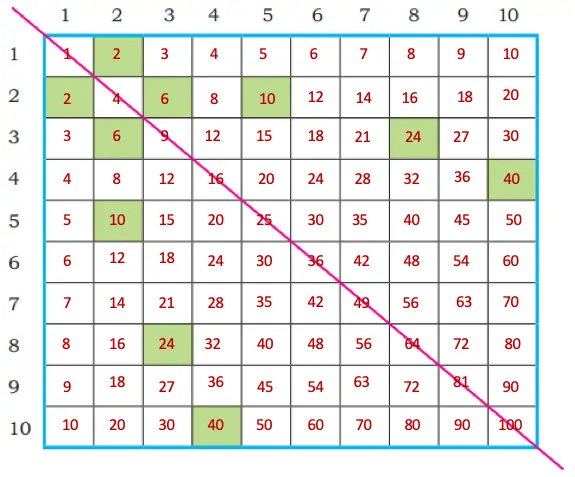
Q. What do you notice about the numbers shaded in green? Why is this happening?
Solution:The numbers shaded in green show us that the product of the two numbers does not change on changing the order of the numbers being multiplied. For example: 6 ´ 5 = 30 and 5 ´ 6 = 30.
1. Share the patterns that you notice in the table.
Solution:
We noticed that each row/column is a multiple of its row/column number. Also, the diagonal cells of the table are all perfect squares.
2. Are the numbers in row 7 the same as the numbers in column 7? In general, are the numbers in a given row the same as the numbers in the corresponding column? Why does this happen?
Solution:
Yes, the numbers in row 7 are the same as the numbers in column 7.
Yes, the numbers in a given row are the same as the numbers in the corresponding column because the product of two numbers does not change on changing the order of the numbers being multiplied.
3. Is there a row where all answers (products) are even numbers? Which rows have this property?
Solution:
Yes, there are rows where all the products are even numbers. This property is shown by rows 2, 4, 6, 8, and 10.
4. Is there a row having only odd numbers as products?
Solution:
No.
5. Are there rows that have both even and odd numbers? What do you notice? Why is it so?
Solution:
Yes, rows 1, 3, 5, 7, and 9 have both even and odd numbers. It is because when an odd number is multiplied with an even number, we get an even number, but when an odd number is multiplied with another odd number, we get an odd number.
6. Are there more even numbers in the chart or odd numbers? How do you know?
Solution:
There are more even numbers in the chart because rows 2, 4, 6, 8, and 10 have all even products, and rows 1, 3, 5, 7, and 9 have some even products too.
7. Colour the common multiples of the following numbers. Use different colours for each item.
(a) 2 and 3
(b) 4 and 8
(c) 7 and 9
Share your observations regarding the numbers that are common multiples in each case.
Solution:
(a) Common multiples of 2 and 3 are 6, 12, 18,… .
(b) Common multiples of 4 and 8 are 8, 16, 24, 32, 40,….
(c) Common multiples of 7 and 9 are 63.
8. Observe the pattern in the ones digit of the products in row 5?
Observe the ones digit of the products in other rows also. What patterns do you notice?
Solution:
The ones digits of the products in row 5 are 0 and 5.
Some patterns in the ones digit of other rows:
Row 1: The ones digits repeat from 0 to 9.
Row 2: The pattern repeats as 0, 2, 4, 6, 8.
Row 4: The pattern repeats as 0, 4, 8, 2, 6.
Row 6: The pattern repeats as 0, 6, 2, 8, 4.
Row 8: The pattern repeats as 0, 8, 6, 4, 2.
Row 9: The ones digits repeat from 0 to 9
Row 10: All products end in 0.
9. Here is row 8 of the chart: 8, 16, 24, 32, 40, 48, 56, 64, 72, 80.
The ones digit of the products are: 8, 6, 4, 2, 0, 8, 6, 4, 2, 0 .
Do’ you see a repeating pattern here?
Guess the ones digit of the following products. Verify your answer by multiplying. Write the digit in the space given.
11 × 8 = _____ 12 × 8 = _____ 13 × 8 = _____
Solution:
The repeating pattern in the ones digit of row 8 is 8, 6, 4, 2, 0.
1 × 8 = 8
2 × 8 = 16
3 × 8 = 24
So, the ones digit of:
11 × 8 = 8
12 × 8 = 6
13 × 8 = 4.
Also, 11 × 8 = 88, 12 × 8 = 96, 13 × 8 = 104.
10. In row 8 of the chart, there is no number whose ones digit is 1. What other digits do not appear as the ones digit?
Solution:
Digits 3, 5, 7, and 9.
11. Is there a row in which all the digits from 0 to 9 appear as the ones digit? Which rows have this property?
Solution:
Yes, rows 1, 3, 7, and 9 have this property.
12. It can be seen in row 8 that 0 appears as the ones digit two times.
___ × 8 gives 0 as the ones digit.
What numbers can go in the box? Give 5 examples of such numbers.
Solution:
5 × 8 = 40 or 10 × 8 = 80, gives 0 as the ones digit.
15 × 8 = 120, 20 × 8 = 160, 25 × 8 = 200, 30 × 8 = 240, 35 × 8 = 280.
13. Is there a row in which 0 appears as the ones digit only once?
Which rows have this property?
Solution:
Yes, rows 1, 3, 7, and 9 have this property.
14. What do you notice about the answers for Questions 11 and 13? Share in the grade.
Solution:
Do it yourself.
Multiples of ten (Page 137)
1. Let us count the number of wheels in tricycles.

Number of wheels in 10 tricycles with 3 wheels in each is 10 × 3 wheels = ______ wheels.
Number of wheels in 10 more tricycles with 3 wheels in each is 10 × 3 wheels = _______ wheels.
Number of wheels in 20 tricycles with 3 wheels in each is 20 × 3 wheels = ______ + _____ = ______ wheels.
10 × 3 = _____
20 × 3 = _____
Solution:
Number of wheels in 10 tricycles with 3 wheels in each is 10 × 3 wheels = 30 wheels.
Number of wheels in 10 more tricycles with 3 wheels in each is 10 × 3 wheels = 30 wheels.
Number of wheels in 20 tricycles with 3 wheels in each is 20 × 3 wheels = 30 + 30 = 60 wheels.
10 × 3 = 30.
20 × 3 = 60.
2. Let us count the number of wheels in cars.

Number of wheels in 10 cars with 4 wheels in each is 10 × 4 wheels = _______ wheels.
Number of wheels in 30 cars with 4 wheels in each is 30 × 4 wheels = _____ + _____ + _____ = _____ wheels.
Solution:
Number of wheels in 10 cars with 4 wheels in each is 10 × 4 wheels = 40 wheels.
Number of wheels in 30 cars with 4 wheels in each is 30 × 4 wheels = 40 + 40 + 40 = 120 wheels.
10 × 4 = 40.
30 × 4 = 120.
3. Solve the following in a similar way. Share how you found the answers.
a) 10 × 6 = ____
b) 40 × 6 = ____
c) 10 × 8 = ____
d) 60 × 8 = ____
e) 6 × 8 = ____
g) 4 × 6 = ____
f) 60 × 8 = ____
h) 40 × 8 = ____
Solution:
(a) 10 × 6 = 60
(b) 40 × 6 = 60 + 60 + 60 + 60 = 240
(c) 10 × 8 = 80
(d) 60 × 8 = 80 + 80 + 80 + 80 + 80 + 80 = 480
(e) 6 × 8 = 48
(f) 60 × 8 = 10 × 48 = 480
(g) 4 × 6 = 24
(h) 40 × 8 = 40 + 40 + 40 + 40 + 40 + 40 + 40 + 40 = 320
Q. What happens when the number of groups is a multiple of 10?
Solution:
When the number of groups is a multiple of 10, then it will always ends in 0 at ones place.
Multiplying Using 10 (Page 138 – 139)
1. Radha is packing cupcakes in boxes of 4. She has packed 18 boxes. How many cupcakes are there in the packed boxes?

18 boxes have 4 cupcakes in each. So, there are 18 × 4 cupcakes.
10 boxes with 4 cupcakes in each contain 10 × 4 cupcakes = ______ cupcakes.
8 boxes with 4 cupcakes in each contain 8 × 4 cupcakes = _________ cupcakes.
18 boxes with 4 cupcakes in each contain ____ + ____ cupcakes = _________ cupcakes.

Solution:
18 boxes have 4 cupcakes in each. So, there are 18 × 4 cupcakes.
10 boxes with 4 cupcakes in each contain 10 × 4 cupcakes = 40 cupcakes
8 boxes with 4 cupcakes in each contain 8 × 4 cupcakes = 32 cupcakes
18 boxes with 4 cupcakes in each contain 40 + 32 cupcakes = 72 cupcakes.
2. 8 bamboo rods are needed to make a bullock cart. How many bamboo rods are needed for 23 carts?

One cart needs 8 bamboo rods. 23 carts need 23 × 8 rods.
20 carts with 8 rods in each need 20 × 8 rods = ________ rods.
3 carts with 8 rods in each need 3 × 8 rods = _________ rods.
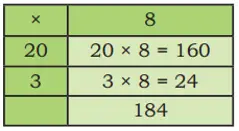
Solution:
20 carts with 8 rods in each need 20 × 8 rods = 160 rods.
3 carts with 8 rods in each need 3 × 8 rods = 24 rods.
So, bamboo rods needed for 23 carts = 160 rods + 24 rods = 184 rods.
Let Us Solve (Page 139)
1. A flock of 25 geese and 12 sheep have gathered around a pond. Chippi the lizard sees many legs. How many legs does it see?
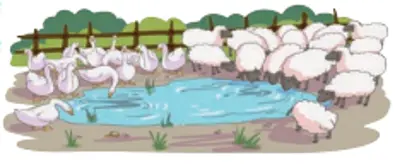
Solution:
Since goose has 2 legs and sheep has 4 legs.
25 geese = 2 × 25 = 50 legs.
12 sheep = 12 × 4 = 48 legs.
Total legs Chippi sees = 50 geese legs + 48 sheep legs = 50 + 48 = 98 legs.
2. In an auditorium, 8 children are sitting in each row. There are 15 such rows in the school auditorium. How many children are in the auditorium?
Solution:
Children in 1 row = 8
Children in 15 rows = 15 × 8 = 120
So, there are 120 children are in the auditorium.
3. A book shop has kept 9 books in each pile. There are 14 such piles. How many books does the shop have?
Solution:
Books in 1 pile = 9 books.
Books in 14 piles = 14 × 9 books = 126 books.
So, the shop has 126 books.
4. Surya is making a patch work with beads of two colours as shown in the picture. How many beads has he used? How many each of golden colour beads and white colour beads has he used in making this patch work?
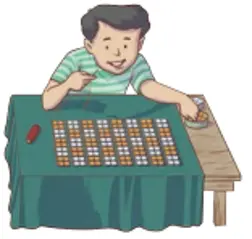
Solution:
Columns in patch work = 8.
Beads in one column = 4 × 5 = 20.
Total beads used in the patch work = 20 × 8 = 160.
White beads in two consecutive columns = 20.
So, total white beads in the patch work = 4 × 20 = 80.
Golden beads in two consecutive columns = 20.
So, total golden beads in the patch work = 4 × 20 = 80.
5. For each of the following multiplication problems, make your own stories as above. Then find out the product.
(a) 34 × 3
(b) 75 × 5
(c) 46 × 6
(d) 50 × 9
Solution:
(a) There are 34 students in a class. Each student received 3 toffees. How many toffees were distributed in total?
34 × 3 = 102 toffees.
(b) There are 75 children at a picnic. Each child was given 5 balloons. How many balloons were distributed?
75 × 5 = 375 balloons.
(c) A farmer planted 46 rows of trees. In each row, there are 6 trees. How many trees did the farmer plant in all?
46 × 6 = 276 trees.
(d) A shopkeeper packed 50 boxes. Each box contains 9 chocolates. How many chocolates did he pack in total?
50 × 9 = 450 chocolates.
Division (Page 140 – 141)
1. A factory has ordered 58 wheels for the small tempos that they make. Each tempo has 3 wheels.
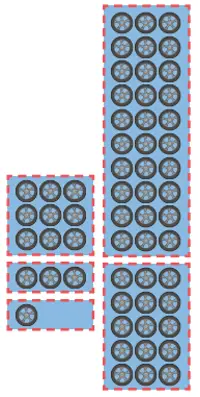
In how many tempos can they fix the wheels? Discuss your thinking in each step.
Number of tempos is 58 ÷ 3
30 wheels are needed for 10 tempos. _______wheels are left.
15 wheels are needed for _______ tempos. _______wheels are left.
9 wheels are needed for_______ tempos. _______ wheels are left.
_______ wheels are needed for_______ tempos.
_______ wheels are left
Can we make another tempo?
How many total tempos can the factory make using the 58 wheels? ______
Solution:
Number of tempos is 58 ÷ 3
30 wheels are needed for 10 tempos. 28 wheels are left.
15 wheels are needed for 5 tempos. 13 wheels are left.
9 wheels are needed for 3 tempos. 4 wheels are left.
3 wheels are needed for 1 tempo. 1 wheel is left.
No, with 1 wheel left, we can’t make a tempo.
So, with 58 wheels, we can make 19 tempos. 1 wheel is left.
2. A dairy farm has many cows. Chippi the lizard is surprised to see 88 legs.
How many cows are there in the farm? Write appropriate sentences as above to show your thinking.

Number of legs of a cow: ________
Number of cows is 88 ÷ ________
Show your work using the table below.
Hint: Taking out groups of 10s is easy.

Total number of cows = ______
Solution:
Number of legs of a cow: 4
Number of cows is 88 ÷ 4

Total number of cows = 10 + 7 + 5 = 22.
Let Us Solve (Page 141)
1. In a big aquarium, Jolly fish sees 72 legs of octopuses. How many octopuses are there in the aquarium?

Solution:
No. of legs of an octopus = 8
No. of octopuses in the aquarium = 72 ÷ 8 = 9

Total octopuses = 5 + 3 + 1 = 9.
2. A sports store packs 4 shuttlecocks in a bigger box. They have 50 shuttlecocks.
How many boxes will they need to pack all of them? Can they pack all the shuttlecocks in the boxes? How many are left?
Solution:
No. shuttlecocks in a box = 4
No. of boxes needed to pack all shuttlecocks = 50 ÷ 4
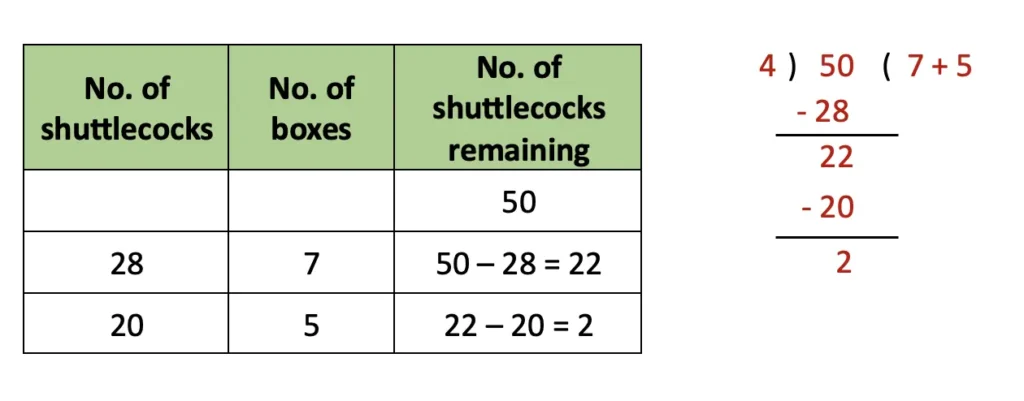
No, all shuttlecocks can’t be packed in the boxes. So, 50 shuttlecocks can be packed in 12 boxes (7 + 5) and 2 shuttlecocks are left over.
3. Rakul Chachi uses a part other farm to grow flowering plants for the upcoming festive season. She has planted 75 saplings of roses. Each row has 5 saplings. How many rows of saplings has she planted?
Solution:
Number of saplings in a row = 5 Number of rows of saplings planted = 75 ÷ 5

Total rows of saplings = 10 + 4 + 1 = 15.
4. Make stories for the following problems and solve them:
a) 70 ÷ 5
Solution:
There are 70 apples that need to be packed equally into 5 baskets. How many apples will go in each basket?
No. of apples in each basket = 70 ÷ 5 = 10 + 4 = 14.
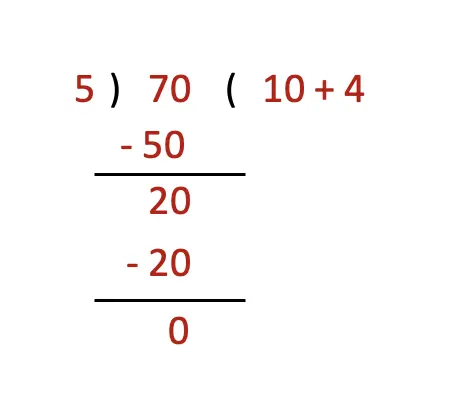
(b) 84 ÷ 7
Solution:
A teacher has 84 pencils. She wants to distribute them equally among 7 students. How many pencils will each student get?
No. of pencils each student will get = 84 ÷ 7 = 7 + 5 = 12.

(c) 69 ÷ 3
Solution:
There are 69 books to arrange equally on 3 shelves. How many books will go on each shelf?
No. of books on each shelf = 69 ÷ 3 = 10 + 10 + 3 = 23.

(d) 93 ÷ 6
Solution:
A shopkeeper has 93 toffees. He wants to pack them equally into 6 boxes. How many toffees will go in each box, and how many will be left over?
No. of toffees that will go in each box = 93 ÷ 6 = 10 + 5 = 15 and 3 toffees will be left over.
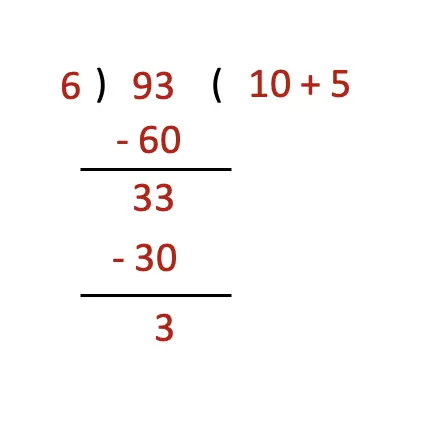
Multiples of 100 (Page 142 – 143)
Q. 100 bikes with 2 people on each have 100 × 2 people = _____ people.
200 bikes with 2 people on each have ______people. How did you find it?
100 cars with 4 people in each have 100 × 4 people = _______ people.
500 cars with 4 people in each have ______people.
How did you find it?
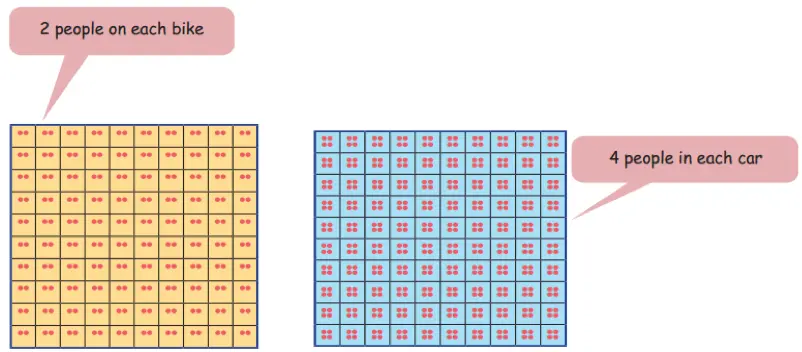
Solution:
100 bikes with 2 people on each have 100 × 2 people = 200 people.
200 bikes with 2 people on each have 200 × 2 = 400 people.
We found it by multiplying the number of bikes with people on each bike.
100 cars with 4 people in each have 100 × 4 people = 400 people.
500 cars with 4 people in each have 500 × 4 = 2000 people.
We found it by multiplying the number of cars with people on each car.
Q. 500 × 4 = _____
100 × 4 = _____
5 × 4 = _____
50 × 4 = _____
Solution:
500 × 4 = 2000
5 × 4 = 20
100 × 4 = 400
50 × 4 = 200
Q. What do you notice about multiplying by multiples of 100s?
Solution:
It is easy to multiply by multiples of 100, and it can even be done mentally. We can multiply the digit part first and then add two zeros to the product.
Q. Observe the pattern and complete the answers.
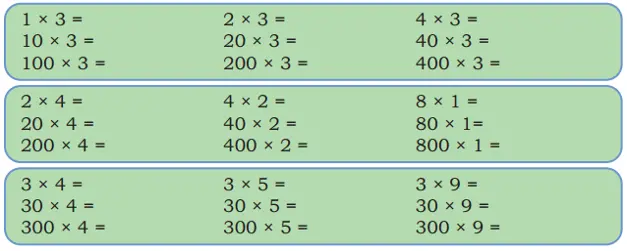
Solution:
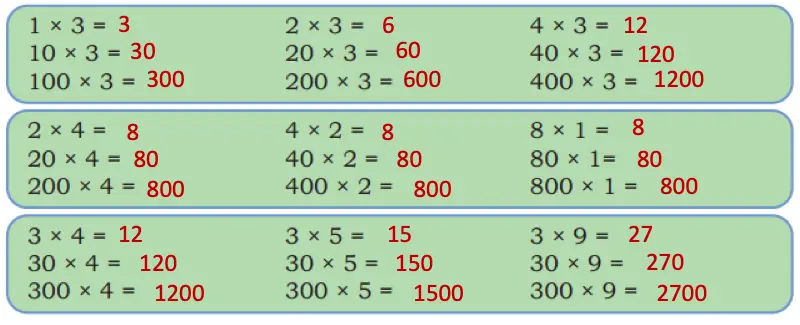
More multiplication (Page 143 – 144)
1. Big electric autorickshaws run in small towns of India and can carry 8 passengers.
How many people can travel in 125 such autos in a single round?

The total number of passengers 125 × 8.
100 autorickshaws with 8 passengers in each have 100 × 8 passengers = ______ passengers.
20 autorickshaws with 8 passengers in each have 20 × 8 passengers = _______ passengers.
5 autorickshaws with 8 passengers in each have 5 × 8 passengers = __________ passengers.
125 autorickshaws with 8 passengers in each have ____ + ____ + ______= _________ passengers.

Solution:
100 autorickshaws with 8 passengers in each have 100 × 8 passengers = 800 passengers.
20 autorickshaws with 8 passengers in each have 20 × 8 passengers = 160 passengers.
5 autorickshaws with 8 passengers in each have 5 × 8 passengers = 40 passengers.
125 autorickshaws with 8 passengers in each have 800 + 160 + 40 = 1000 passengers
2. Kahlu and Rabia are potters and make earthen pots (kulhad) for trains.
They pack 6 kulhads in a box and have packed 174 boxes for delivery. How many kulhads have they made?

Solution:
Total kulhads made = 600 + 420 + 24 = 1044.

Let Us Solve (Page 144 – 145)
1. BP Girl’s school has decided to give all its students two pencils on the first day of school.
It has 465 students. How many pencils does the school need to buy?
Solution:
No. of pencils given to each student = 2
Total students = 465
No. of pencils the school needs to buy = 465 × 2 = 800 + 120 + 10 = 930.
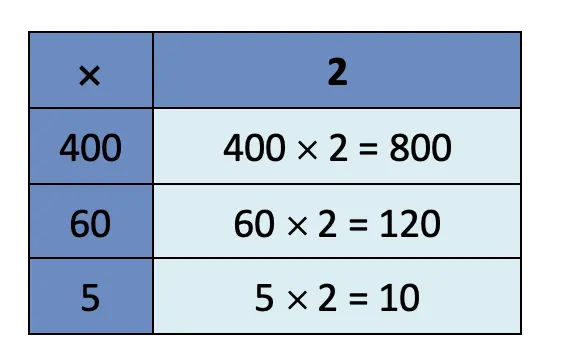
2. 234 children of a school have decided to organise a school mela. Each child contributes ₹5 for the organisation of the mela. How much money do they collect?
Solution:
No. of students = 234
Money contributed by each student = ₹ 5
Total money contributed by all students = 234 × ₹ 5 = ₹1000 + ₹150 + ₹20 = ₹1170.

3. Make stories for the following problems and solve them.
a) 439 × 4
Solution:
A factory makes 439 toys each day. How many toys will it make in 4 days?
No. of toys factory will make in 4 days = 439 × 4 = 1600 + 120 + 36 = 1756.
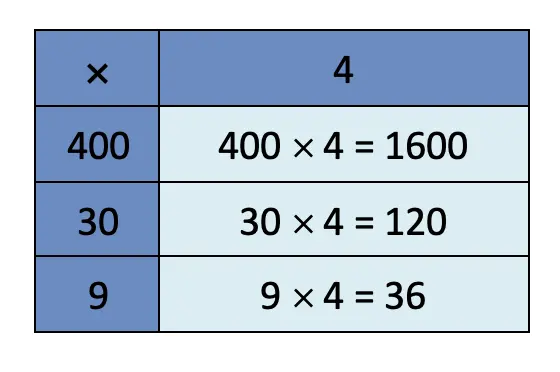
b) 514 × 8
Solution:
A shop sells 514 chocolates each week. How many chocolates will it sell in 8 weeks?
Total chocolates shop will sell in 8 weeks = 514 × 8 = 4000 + 80 + 32 = 4112.
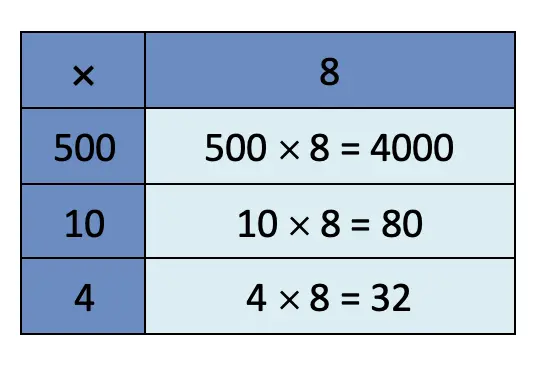
c) 356 × 5
Solution:
There are 356 chairs in one hall. How many chairs are there in 5 such halls?
Total chairs in 5 halls = 356 × 5 = 1500 + 250 + 30 = 1780.

d) 623 × 7
Solution:
A farmer grows 623 watermelons on his farm each year. How many watermelons will he grow in 7 years?
Total watermelons that will grow in 7 years = 623 × 7 = 4200 + 140 + 21 = 4361.
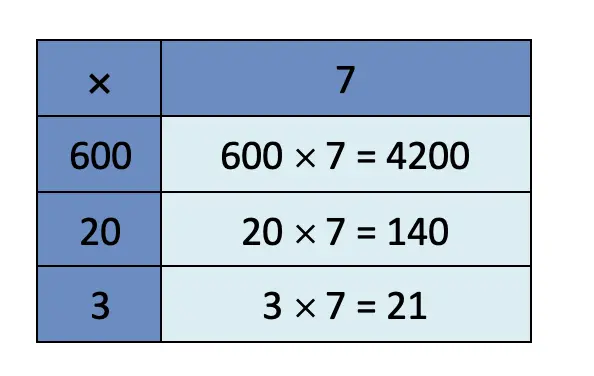
Patterns in Division (Page 146)
Q. How much money will each get? Draw arrows linking the money and the children to answer the questions.

1. ₹ 30 shared equally among 3 children ______________
Solution:
₹ 30 shared equally among 3 children = ₹ 30 ÷ ₹ 3 = ₹ 10
2. ₹ 900 shared equally among 3 children ______________
Solution:
₹ 900 shared equally among 3 children = ₹ 900 ÷ ₹ 3 = ₹ 300
Q. Using the above way of thinking, solve the following problems. Observe and explain the patterns that you notice below.
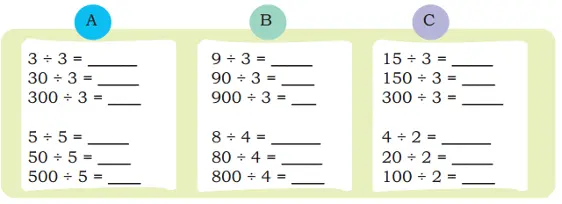
Solution:
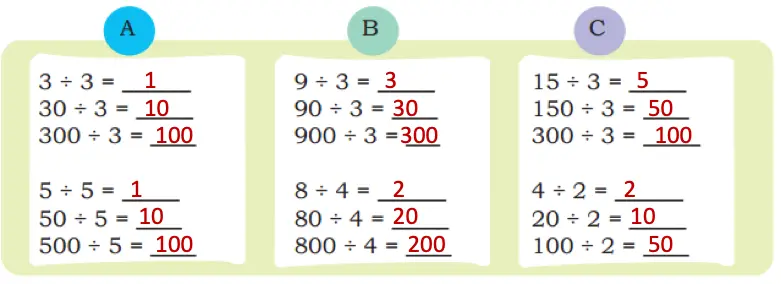
1. A load carrying truck has 6 tyres. Chippi the lizard sees 60 tyres. How many trucks are there?
Solution:
No. of tyres in a truck = 6
Total tyres seen by Chippi = 60
Number of trucks = 60 ÷ 6 = 10.
2. Chippi sees 80 wheels in a car parking space. How many cars are standing in the parking space?Solution:
No. of wheels in a car = 4
Total wheels seen by Chippi = 80
Number of cars = 80 ÷ 4 = 20.
3. Chippi sees 600 legs of ants walking towards the anthill. How many ants are there?
Solution:
No. of legs of an ant = 6
Total legs of ants seen by Chippi = 600
Total ants = 600 ÷ 6 = 100.
4. A fancy shop has packed 800 rubber bands in several packets. Each packet has 4 rubber bands. How many packets of rubber bands does the shop have?
Solution:
No. of rubber bands in 1 packet = 4
Total rubber bands = 800
No. of packets of rubber bands = 800 ÷ 4 = 200.
Let Us Solve (Page 147 – 148)
1. A school bus hires 7 buses to take 245 children to the transport museum. Each bus carry the same number of children. How many children are traveling in each bus?
Solution:
No. of buses = 7
No. of children transported = 245
No. of children traveling in each bus = 245 ÷ 7 = 10 + 10 + 10 + 5 = 35.
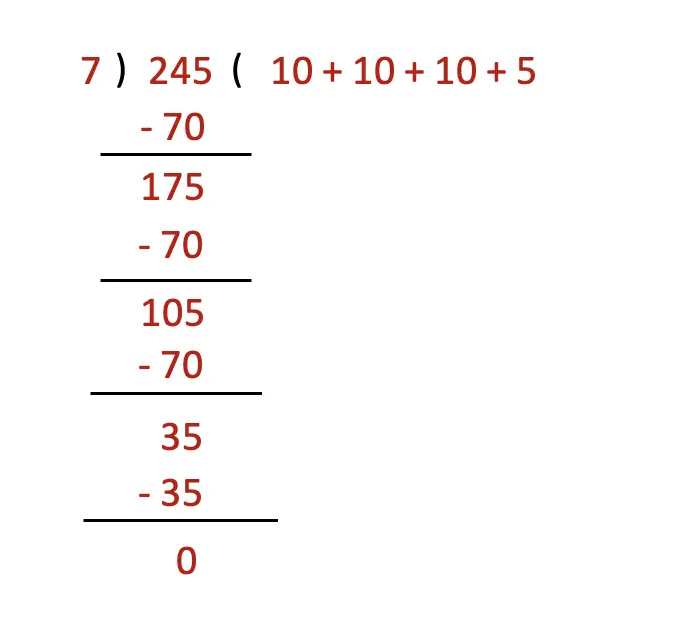
2. The Darjeeling Himalayan Railway is fondly called the “Toy Train”. This toy train ride is also a UNESCO World Heritage Site. This amazing train runs between New Jalpaiguri and Darjeeling and it also passes through one of the highest stations in the world, namely, Ghum. It runs 88 km daily. How much distance does it travel in a week?
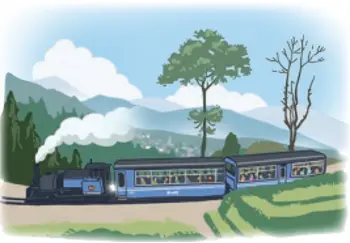
Solution:
Distance travelled in a day = 88 km
Distance travelled in a week = 88 × 7 = 560 + 56 = 616 km.
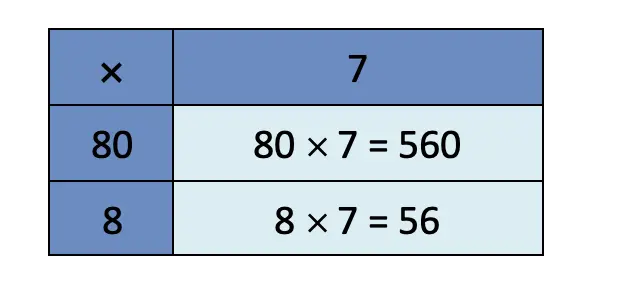
3. The 16 Km river rafting from Shivpuri to Rishikesh in the Ganga provides the most interesting rafting opportunity. In the summer months, VentureOut company took 259 people for rafting. Each raft can take 7 people. How many rafts did it take?
Solution:
Total people rafting = 259
No. of people in one raft = 7
Total no. of rafts = 259 ÷ 7 = 10 + 10 + 10 + 7 = 37.
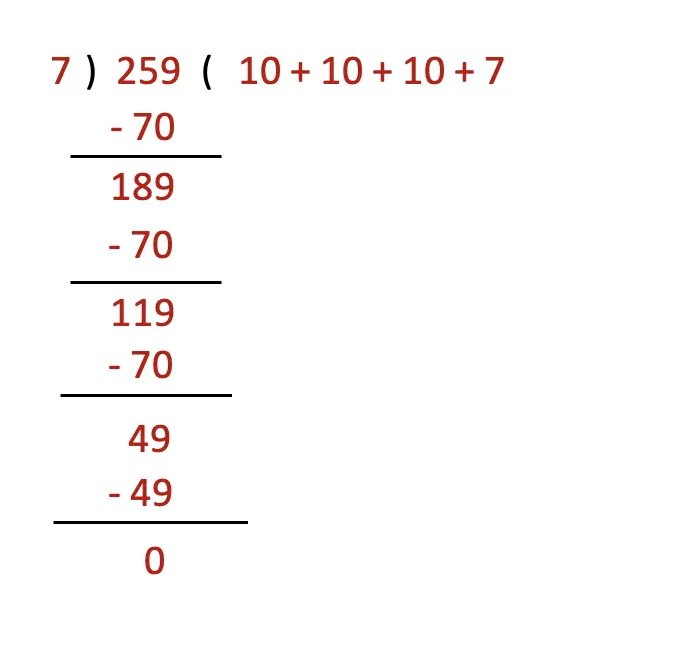
4. Anu saves ₹ 45 every month by putting it in her piggy bank.
a) How much money will Anu save in 6 months?
Solution:
Money saved every month =₹ 45
Money saved in 6 months = 6 × ₹ 45 = ₹ 240 + ₹ 30 = ₹ 270.
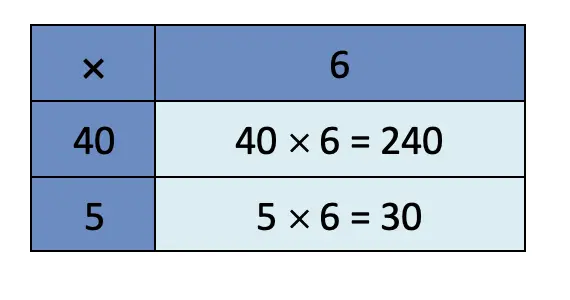
b) She distributes the total money saved after 6 months among 6 of her friends. How much does each friend get?
Solution:
Money distributed among 6 friends = ₹ 270.
Money received by each friend = ₹ 270 ÷ 6 = ₹ 10 + ₹ 10 + ₹ 10 + ₹ 10 + ₹ 5 = ₹ 35.
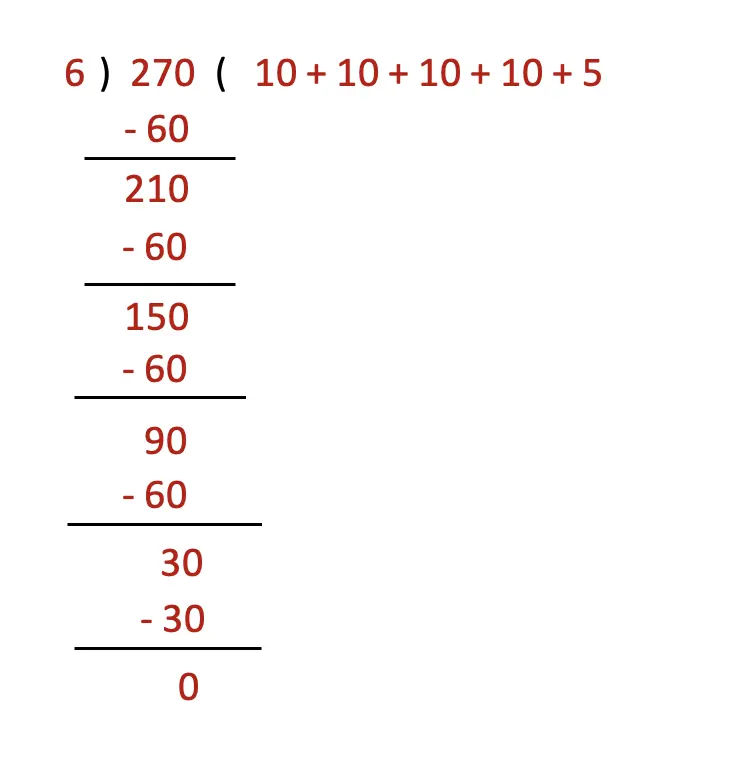
c) If she decides to distribute the saved money among 3 friends after 6 months, how much money will each get?
Solution:Money distributed among 3 friends = ₹ 270.
Money received by each friend = ₹ 270 ÷ 3 = ₹ 20 + ₹ 20 + ₹ 20 + ₹ 20 + ₹ 10 = ₹ 90.
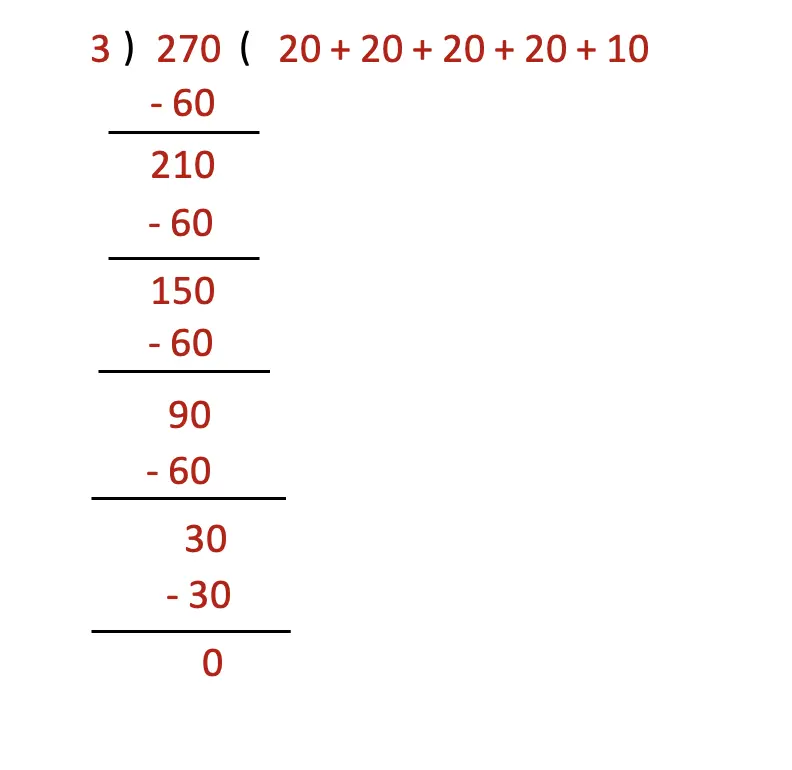
5. Raju drives an auto in his village and takes people to the bus stand. He makes 8 trips in a day. Which of the following questions can be exactly calculated with the above statement?
a) How much money does he make in a day?
Solution:
We don’t know how much Raju earns from one auto trip, so we cannot calculate how much he earns in a day.
b) How many trips does he make in 7 days?
Solution:
Trips made in 1 day = 8 trips.
Trips made in 7 days = 7 × 8 = 56 trips.
c) How much time does one trip take?
Solution:
We don’t know how much time Raju takes to complete one trip, as it is not mentioned.
d) How many trips does he make in 4 weeks?
Solution:
Trips made in 1 day = 8 trips.
Trips made in 1 week = 7 × 8 = 56 trips.
Trips made in 4 weeks = 4 × 56 = 224 trips.
6.
a) 45 × 9 = 360 + 45 = 405.
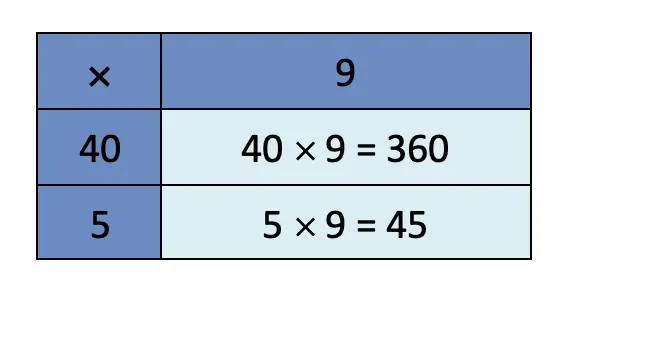
b) 507 × 7 = 3500 + 49 = 3549.
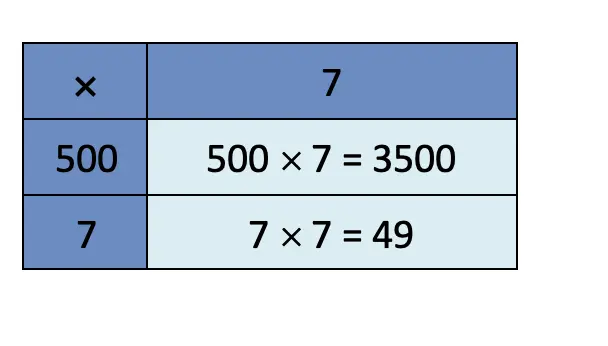
c) 94 ÷ 4 = 10 + 10 + 3 = 23 with 2 left over.
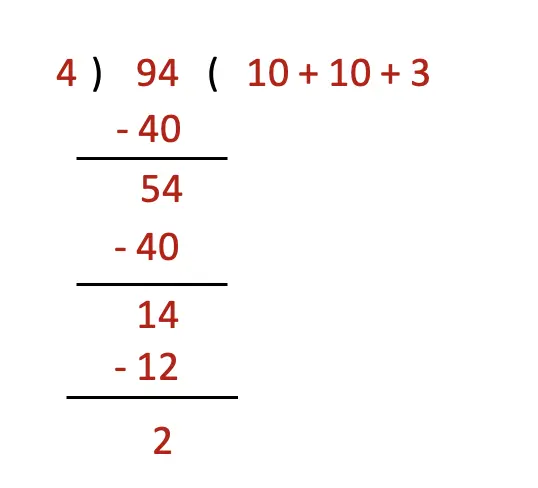
d) 778 ÷ 6 = 100 + 20 + 9 = 129 with 4 left over.
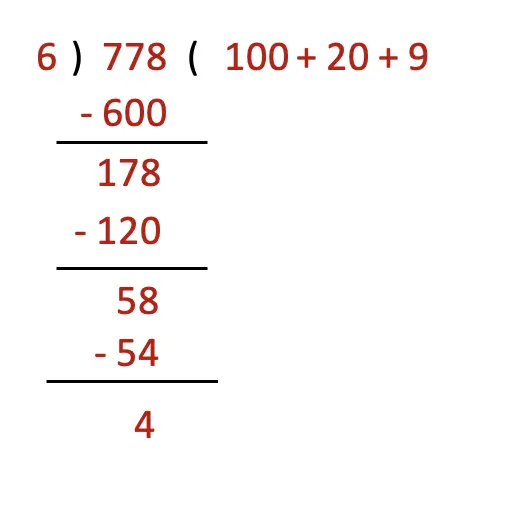
e) 94 × 5 = 450 + 20 = 470.
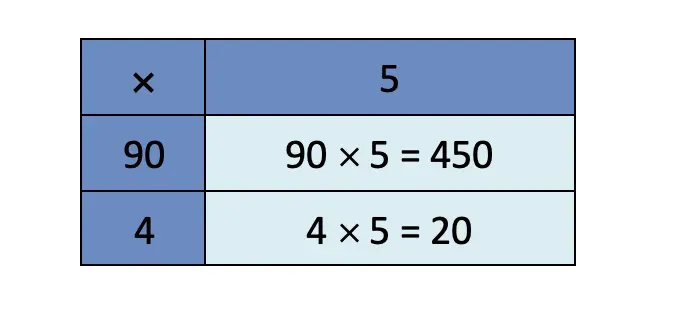
f) 396 × 4 = 1200 + 360 + 24 = 1584.
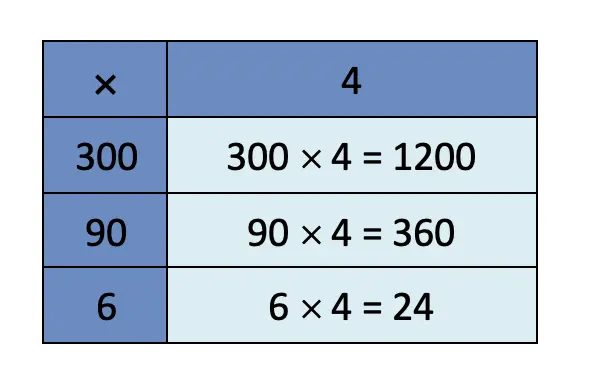
g) 83 ÷ 3 = 20 + 7 = 27 with 2 left over.
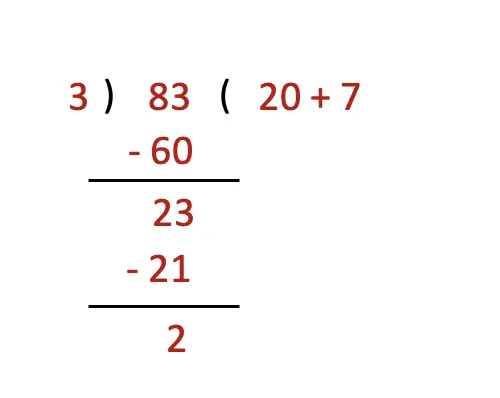
h) 635 ÷ 5 = 100 + 20 + 7 = 127.
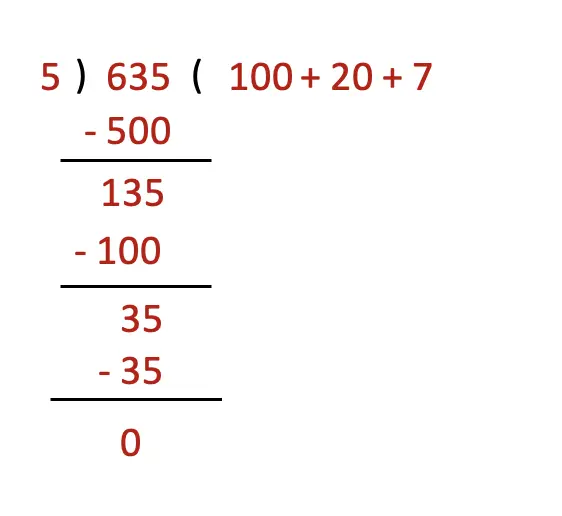
7. In mathematics, some statements are always true, some are sometimes true, and some are never true. Tick (√) in the appropriate column.
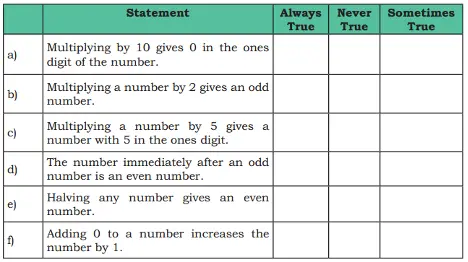
Solution:
